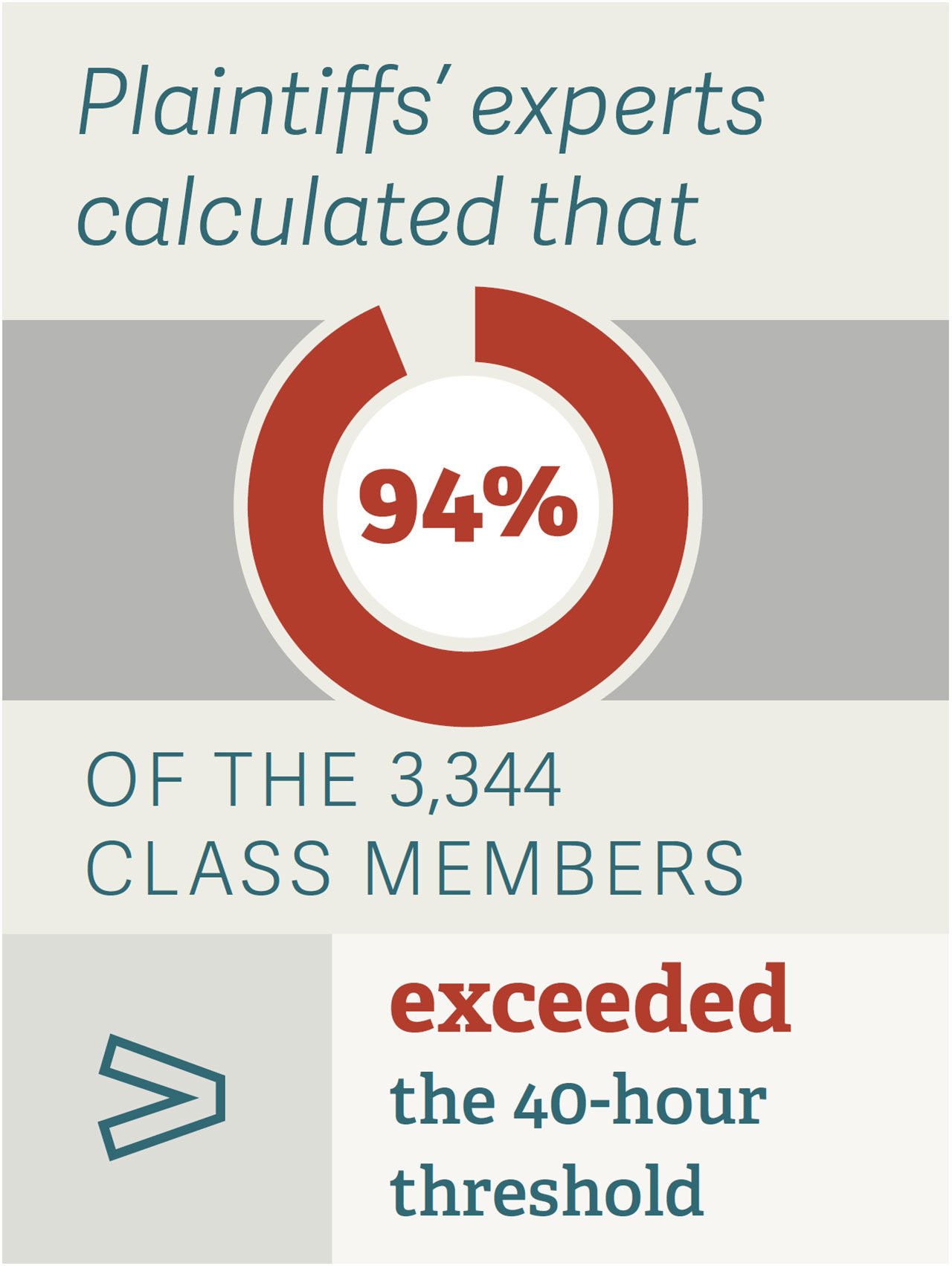-
Implications of the Tyson Ruling for Class Certification
The US Supreme Court’s decision in Tyson Foods Inc. v. Bouaphakeo et al. addressed the use of statistical techniques to satisfy questions for class certification. Although its origins are in labor law, the case has broader implications for methods and evidence in class certification in antitrust matters.

The putative class comprised employees of Tyson Foods working in a pork processing plant who were required to wear protective gear while performing their jobs. The employees claimed that, even though they were hourly workers, many of them were not fully compensated for the time it took to “don and doff” the gear during their workday. The employees sought certification as a class, claiming the activity was essential to their jobs and that the time spent changing meant that they were owed overtime compensation of 1.5 times their hourly wages under the 1938 Fair Labor Standards Act (FLSA).
Tyson argued that the class should not be certified, as individual inquiry would be needed to determine what gear was necessary, how long it took each employee to change, and whether that additional time pushed the employee’s total weekly work time above the 40 hours required for overtime. However, Tyson did not maintain records of the time individual employees took to don and doff the gear.
Based on a review of 744 videotaped employee observations, plaintiffs’ experts calculated the average time spent donning and doffing. They then applied the average to individual timekeeping records to determine whether total work time, including time required for donning and doffing, exceeded 40 hours a week. Using this method, the experts found that, of the 3,344 class members, 212 never exceeded the 40-hour threshold. They calculated damages of $6.7 million, which could be distributed to the remaining class members. However, a jury reduced the class damages to $2.9 million.
Issues Before the Court and Findings
Tyson petitioned the Supreme Court on whether the putative class could rely on a statistical sample for determination of class-wide liability, as opposed to individual records. The court’s majority found this argument to be too broad, recognizing that sampling is often the only practical means of providing information in the absence of other data. They concluded that if one individual plaintiff could rely on evidence from a representative sample to establish under-compensation, then the class could do the same.
Tyson also questioned to what extent the court must have a method available to avoid compensating class members who were not injured. The jury’s reasoning behind its decision to reduce damages was unclear – they either found the estimates of donning and doffing time by the plaintiffs’ expert unreliable, or reduced those estimates to exclude some of the estimated donning and doffing time that the jury concluded did not need to be compensated (specifically around meal breaks).
In his concurring opinion, Chief Justice John Roberts opined that this uncertainty might make it difficult for the district court to avoid compensating uninjured class members, since the court would have to “reverse-engineer” the estimated uncompensated time from the lump sum awarded by the jury.
Implications
Our survey of recent class certification decisions suggests that while this case has been regularly cited, it has not yet led to a shift in class certification. Nonetheless, it is worth asking whether Tyson will allow future courts to tighten or weaken standards for class certification. On the one hand, Tyson supports the use of samples and surveys of data by putative classes to address the Rule 23 predominance standard, especially where more “complete” data may be unavailable. On the other hand, litigants may find that courts will scrutinize damages methods even more closely at the class certification stage to ensure that they provide the finders of fact with sufficient information to distinguish the injured from the uninjured. ■
Aaron Yeater, Managing Principal
Mark J. Lewis, PrincipalAdapted from “Donning And Doffing Damages: Tyson Takeaways For Antitrust,” by Aaron Yeater and Mark J. Lewis, published on Law360.com, May 12, 2016.
